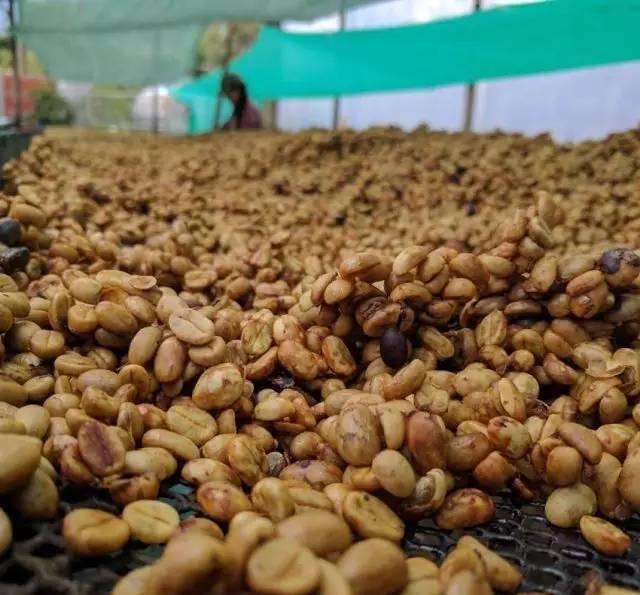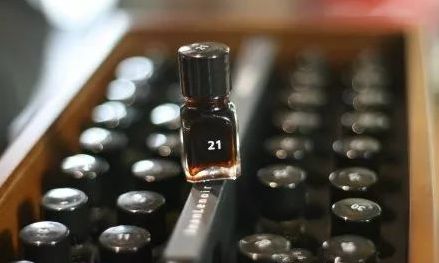Boutique Coffee tasting Guide | what is the difference in sweetness in different coffees? How to extract more sweetness
Professional coffee knowledge exchange more coffee bean information please follow the coffee workshop (Wechat official account cafe_style)
We have discussed the role of smell in coffee senses before, and today the editor continues to talk to you about the taste-sweetness of coffee senses.
First of all, let's see what is sweet?
The generally accepted definition of sweetness is that it is the taste produced by high-sugar substances in food. The most common are large amounts of sweet substances and carbohydrates. These carbohydrates include common sugar (common sugar) and lactose (in milk).
Sugars in coffee include sucrose, arabinose, mannose, glucose, galactose, rhamnose and xylose. Of course, not all of these sugars are soluble in water. The coffee in our cup actually dissolves only part of it. Arabica beans contain almost twice as many sugars as robusta beans, which is one of the reasons why Arabica varieties are praised as of better quality. Also, the slower the coffee cherry ripens (because it is at a higher altitude), the more sugar it produces. In addition, honey-treated beans are usually sweeter than washed beans.

So the problem is, baristas often explain to guests that a type of coffee is honey, brown sugar, caramel, toffee and so on. Since it is all sweet, why do different coffees show different sweetness? Is this the barista's mystery, or can the coffee really make us feel something other than "sweet", resulting in the ability to distinguish different sugars?
Here are the main points.
First of all, we should know that there are only five kinds of "taste" that people's tongue can perceive: sour, sweet, salty, bitter and fresh. Spicy is not a taste, but a sense of pain. So if only from the degree of sweetness, we obviously can not tell whether it is the sweetness of honey or brown sugar. Then our sense of smell comes into play again! When you hold your nose to drink honey water and sugar water, you can clearly tell them by the reaction in the back of the nose!

The throat is connected to the nasal cavity, and when you swallow anything, as long as it has odor molecules, it can reach your olfactory receptor from the throat, directly smell the smell and the feedback of the smell after swallowing, to really form what we call "taste". This provides reliable identification information for the "sweetness" of coffee.
Let's divide the "sugar" of coffee into two categories.
One. Taffy, caramel, honey, maple syrup
The first sign of discrimination is its "stickiness", which is related to both our taste and the degree of sweetness, and can be confirmed by our sense of smell. We can simply boil it down to toffee > caramel > honey > maple syrup. This consistency can be expressed as we smell the coffee at the bottom of the cup after drinking coffee. Does it make you feel bored? Or is it lighter? In addition, the taste of honey is a little sour and fermented, while the smell of maple syrup is light and woody. The first category of sugars is more determined by the variety of coffee, how it is treated, and the reactions of various chemicals in roasting. For example, honey-treated coffee is sweeter than washed coffee, and lengthening Mena reaction and caramelization reaction during roasting can also make coffee develop more sweetness, but keep in mind that going too far is not as good as it is. In terms of beans, Indonesia's gold Mantenin is caramel sweet, Kenya's Asalia is honey sweet (varieties and treatments are different). In practice, we have to distinguish from hot to cold, from wet fragrance to aftertaste, especially when coffee is close to room temperature.

Two. Black sugar, yellow sugar, white sugar
The second category is sucrose in terms of purity and sweetness. although white sugar > yellow sugar > caramel in terms of purity, we have to add a sense of smell to coffee, which makes the sweet black sugar > brown sugar > white sugar in the coffee. Different degrees of sweetness give us different feelings, which can be controlled by adjustment when we make hand-made coffee, that is, the so-called "how to extract more sweetness."
Let's do a hand-to-hand comparison operation, using the same bean: Burundi.

Also use V60 filter cup and 15g coffee.
The first cooking parameters are as follows: water temperature 91 ℃, ratio of water to powder 1: 15 and 3-stage, cooking time 2 minutes and 15 seconds. The sweetness is very high, reaching the sweetness of yellow sugar.
The second cooking parameters: water temperature 86 ℃, ratio of water to powder 1: 15 and 3-stage, cooking time 2 minutes and 15 seconds. The sweetness of this time is obviously not as sweet as the first time, and it feels like sugar water.
The third cooking parameters: water temperature 91 ℃, ratio of water to powder 1: 15, 3-stage, cooking time 1: 30 seconds. The sweetness of this time is not as sweet as that of the first time, and it tastes closer to a glass of light sugarcane water.
Thus it can be seen that in order to fully extract the sugar in coffee, appropriate temperature and sufficient extraction time are very necessary! But the same sentence: too much, too high water temperature and extraction for too long, the bitter and astringent taste of coffee will be extracted, cover up the sweetness, the loss outweighs the gain.
Finally, let's talk about how to train the tongue's sense of sweetness, which is the so-called devil water training, but we can simplify it.
Devil's Water training-- simplified version
Prepare 5 cups of water, water 250ml, then add 1 to 5 grams of sugar, melt, and then you can start to drink, feel different sweetness.

If you eat citric acid, you can do advanced training: add different amounts of citric acid to 3 cups of water with the same amount of sugar to feel the effect of different acidity on sweetness. You can even try adding salt to it to train the tongue's ability to distinguish sweetness in a compound environment.

I believe that through the above study and exercise, everyone can have a better understanding and improvement of the sweetness of coffee.
[previous review]
Practical information: the importance of sensory training for coffee tasting-sense of smell
Important Notice :
前街咖啡 FrontStreet Coffee has moved to new addredd:
FrontStreet Coffee Address: 315,Donghua East Road,GuangZhou
Tel:020 38364473
- Prev

[boutique Coffee tasting] the importance of sensory training for coffee tasting-smell
Professional coffee knowledge exchange more coffee bean information Please follow the coffee workshop (Wechat official account cafe_style) when tasting boutique coffee, we should understand: for taste training or memory, improve our discrimination ability. Drinking coffee is the result of vision, smell and taste. Train your senses, a lot of people tell you, just drink more. The truth is, drink, and
- Next

What's the difference between single espresso and double espresso? What coffee beans are used in espresso?
Professional coffee knowledge exchange more coffee bean information Please follow Coffee Workshop (Wechat official account cafe_style) [Preface] espresso (Espresso) is a beverage made by forcing near-boiling high-pressure water through ground coffee. Espresso
Related
- Beginners will see the "Coffee pull flower" guide!
- What is the difference between ice blog purified milk and ordinary milk coffee?
- Why is the Philippines the largest producer of crops in Liberia?
- For coffee extraction, should the fine powder be retained?
- How does extracted espresso fill pressed powder? How much strength does it take to press the powder?
- How to make jasmine cold extract coffee? Is the jasmine + latte good?
- Will this little toy really make the coffee taste better? How does Lily Drip affect coffee extraction?
- Will the action of slapping the filter cup also affect coffee extraction?
- What's the difference between powder-to-water ratio and powder-to-liquid ratio?
- What is the Ethiopian local species? What does it have to do with Heirloom native species?

